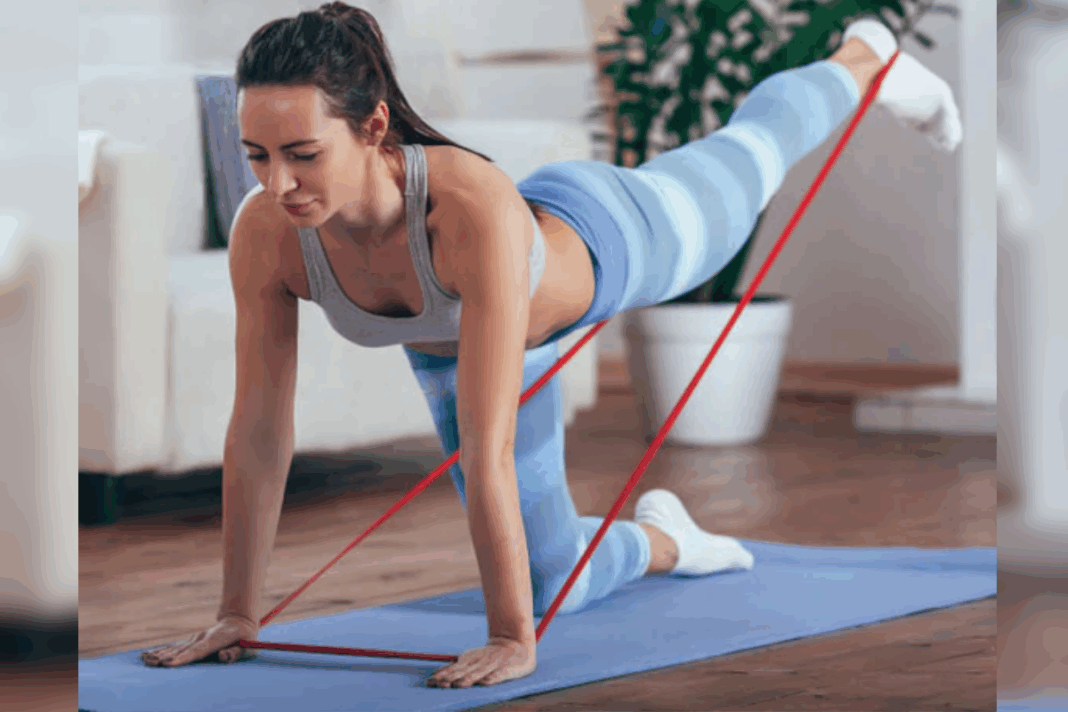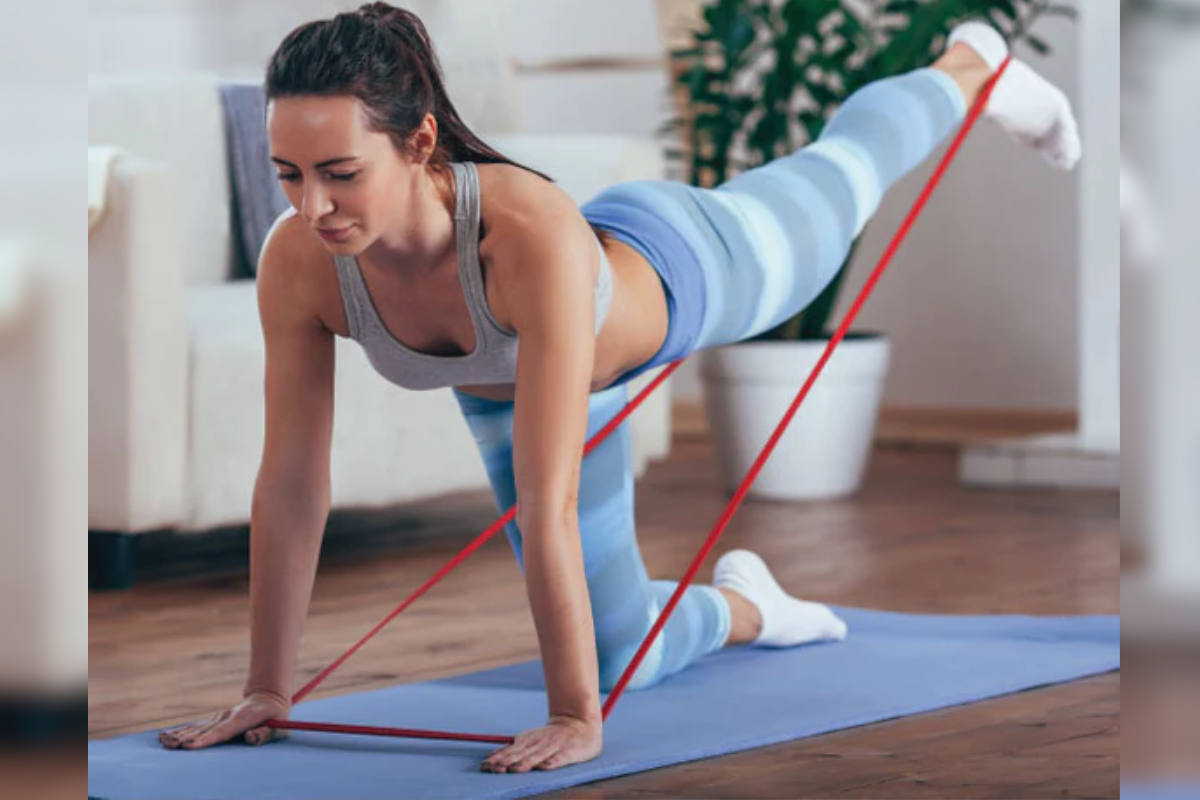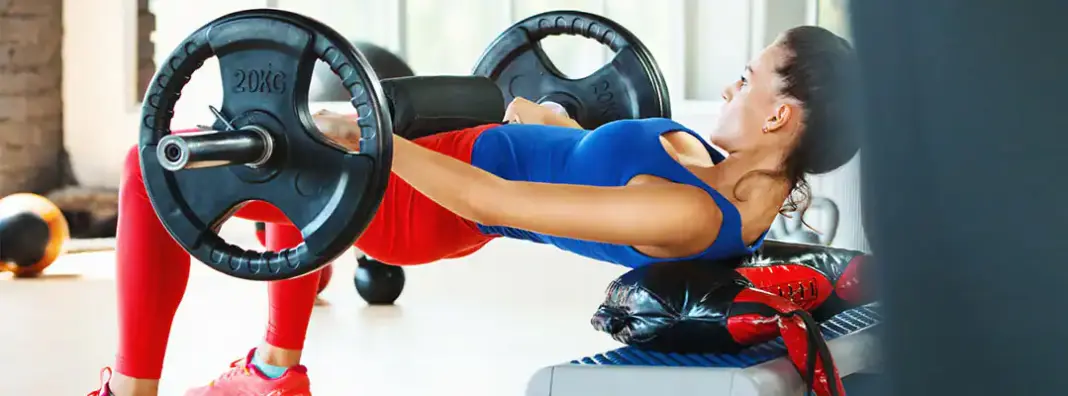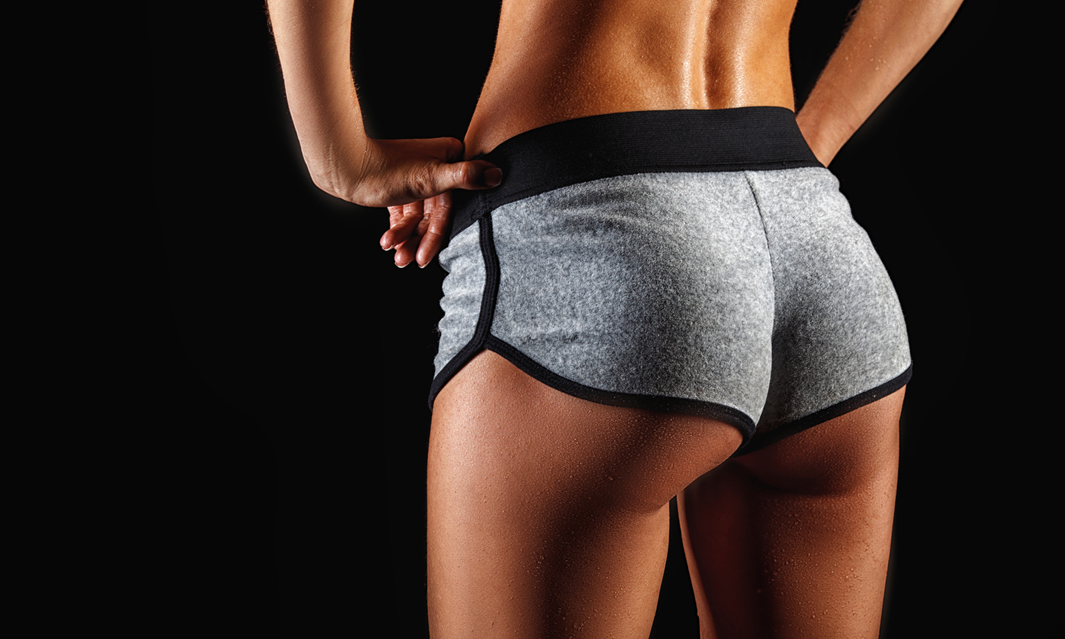Banded Glute Exercises: Build Strength and Shape Without Heavy Weights
As a bodybuilder, I’ve learned one truth that too many lifters still overlook: your glutes won’t grow unless you actually train them with intention — and that doesn’t always require barbells or machines.
Resistance bands, when used correctly, can be a powerful tool to stimulate glute growth, increase activation, and even fix movement weaknesses that limit your performance on compound lifts.
Whether you’re training at home, trying to boost glute hypertrophy, or looking to add more frequency without trashing your CNS, banded glute work belongs in your toolbox.
This guide covers everything you need to know about banded glute training — how it works, when to use it, and which exercises actually deliver results.
Why Train Glutes with Bands?
Let’s address the elephant in the room: Can you really build muscle using just resistance bands? The answer is yes — if you train smart.
Bands don’t just provide resistance; they create constant tension, especially in the peak contraction of each rep. This makes them ideal for targeting the glutes, which respond well to:
- High-tension isolation work
- Time under tension
- Peak contraction and metabolic stress
Benefits of Banded Glute Work:
- Low joint stress (great for recovery days or beginners)
- Maximal mind-muscle connection
- Perfect for high-rep finishers and activation sets
- Portable and easy to use anywhere
- Enhances glute recruitment in compound lifts
Whether you’re squatting 500 pounds or just getting started, banded glute exercises have value — not as a replacement for barbell lifts, but as a complement to smart programming.

Anatomy of the Glutes (And Why Bands Work)
To train glutes effectively, you need to understand what they actually do:
- Gluteus Maximus: Primary driver of hip extension (think bridges, thrusts, lunges, RDLs)
- Gluteus Medius & Minimus: Control abduction, rotation, and pelvic stability (think lateral movements, single-leg balance)
Most gym-goers (especially men) rely on squats and deadlifts to build glutes, but those movements tend to let quads, hamstrings, or lower back dominate. Banded work allows us to isolate and light up the glutes directly, especially the glute medius, which is often undertrained and underdeveloped.
Top Banded Glute Exercises (And How to Do Them Right)
Let’s break down the best banded glute exercises — not just what they are, but how to execute them for maximum muscle recruitment.
Banded Glute Bridge
- Primary Focus: Gluteus Maximus
- How to Perform:
- Loop a mini-band just above the knees.
- Lie on your back, feet flat and shoulder-width apart.
- Drive through your heels and squeeze your glutes at the top.
- Push your knees outward against the band throughout.
Pro Tip: Add a 2–3 second pause at the top. Increase reps or add a second band for more challenge.
Banded Hip Thrust
- Primary Focus: Glute Max (especially peak contraction)
- How to Perform:
- Sit with upper back against a bench, knees bent, feet flat.
- Loop a resistance band over your hips and anchor both ends to heavy dumbbells or floor pegs.
- Drive hips upward, squeezing glutes hard at the top.
Pro Tip: For a home version, use a long loop band under your butt and over your hips. Thrust explosively, pause at the top.
Lateral Band Walk
- Primary Focus: Glute Medius
- How to Perform:
- Place a mini-band just above the knees (or at the ankles for more tension).
- Slight squat stance, chest tall, knees slightly bent.
- Step laterally without letting knees cave or feet drag.
Training Tip: Keep the steps short and controlled. 10–12 steps each direction = one set. This is a glute medius burner.
Standing Banded Kickback
- Primary Focus: Glute Max Isolation
- How to Perform:
- Anchor a loop band low and attach the other end to one ankle.
- Stand tall and kick your leg straight back without arching your lower back.
- Hold the squeeze for 1–2 seconds.
Variation: You can also use a mini-band around the ankles for a freestanding version. Keep it slow and strict.
Banded Clamshell
- Primary Focus: Glute Medius and External Rotators
- How to Perform:
- Lie on your side, knees bent 90 degrees, band just above knees.
- Keep feet together and open your top knee, rotating the hip.
- Avoid rocking your torso backward.
Pro Tip: Hold the top position for 2–3 seconds and keep reps high (15–25).
Fire Hydrants (Banded or Bodyweight)
- Primary Focus: Glute Medius + Rotators
- How to Perform:
- On all fours, mini-band around thighs.
- Lift one knee out to the side while keeping hips square.
- Control the movement and pause at the top.
Great for: Warm-ups, finishers, and pre-squat activation work.
Seated Banded Abduction
- Primary Focus: Glute Medius Isolation
- How to Perform:
- Sit on a bench or chair, feet flat, mini-band above knees.
- Push knees apart and slowly return to start.
- Stay tall and upright; don’t rock your body.
Pro Tip: Combine with hip thrusts or glute bridges for brutal finishers.
Sample Banded Glute Workouts (All Levels)
🔹 Beginner At-Home Glute Circuit
(No Equipment Beyond Bands – 3 Rounds)
- Banded Glute Bridge – 20 reps
- Lateral Band Walk – 10 steps each way
- Clamshell – 15 each side
- Standing Kickback – 12 each leg
- Frog Pumps (bodyweight) – 25 reps
Rest: 30 seconds between movements
🔹 Intermediate Banded Glute Burnout
(Great as a Finisher After Leg Day)
- Banded Hip Thrust – 3 sets of 20
- Fire Hydrants – 3 sets of 15/leg
- Seated Abduction – 2 sets of 30 reps
- Donkey Kick (banded) – 2 sets of 15/leg
- Wall Sit + Abduction Pulses – 30 seconds
Rest: 45 seconds between sets
🔹 Advanced Glute Specialization Circuit
(Minimal Rest, Max Tension – 4 Rounds)
- Hip Thrust (banded) – 15 reps + 5-second hold on final rep
- Lateral Walk – 12 each direction
- Clamshell – 20/side
- Standing Kickback – 15/leg
- Glute Bridge Pulses – 30 seconds nonstop
Optional: Add dumbbells to thrusts or bridges for added overload.
Programming Strategies for Growth
If your goal is glute hypertrophy, band work should support — not replace — your main strength movements. Here’s how to program it effectively:
✅ Frequency:
- 2–4 times per week depending on your split
- Can be used on upper body days for added glute volume
✅ Volume:
- 12–20 sets/week for most intermediate/advanced lifters
- Rotate between high-rep banded isolation and loaded compounds
✅ Reps & Tempo:
- High reps (15–30) with banded work
- Focus on slow eccentrics and holds at peak contraction
✅ Rest Time:
- Short rest (30–45 sec) between isolation exercises
- Longer rest (60–90 sec) if pairing with compound work
Mistakes to Avoid with Banded Glute Work
Even great tools get misused. Avoid these common errors:
- Using bands with no tension at start: If the band isn’t taut at the beginning of the rep, it’s not loading the muscle effectively.
- Rushing through reps: Momentum kills tension. Slow down and squeeze.
- Not progressing: You still need to increase volume, reps, or band resistance over time.
- Only training glutes with bands: Bands are a piece of the puzzle — not the whole puzzle.
🏁 Final Thoughts: Build Strong Glutes Anywhere
Barbells build brute strength. Bands build detail, shape, and high-quality muscle control. Combine both, and your glutes will not only grow — they’ll perform better in everything from squats to sprints.
Whether you’re training at home, recovering from injury, or just want to maximize glute gains, banded glute exercises are worth your time.
Remember: muscle responds to tension and intention. Use resistance bands with purpose, and you’ll feel your glutes fire like never before.
Looking for a full band-only glute program or a custom glute-building training plan? Message me with your goals, equipment, and experience level — and I’ll help you build a blueprint for real growth.
Train smart. Train with intent. And don’t skip glutes — they power everything.




